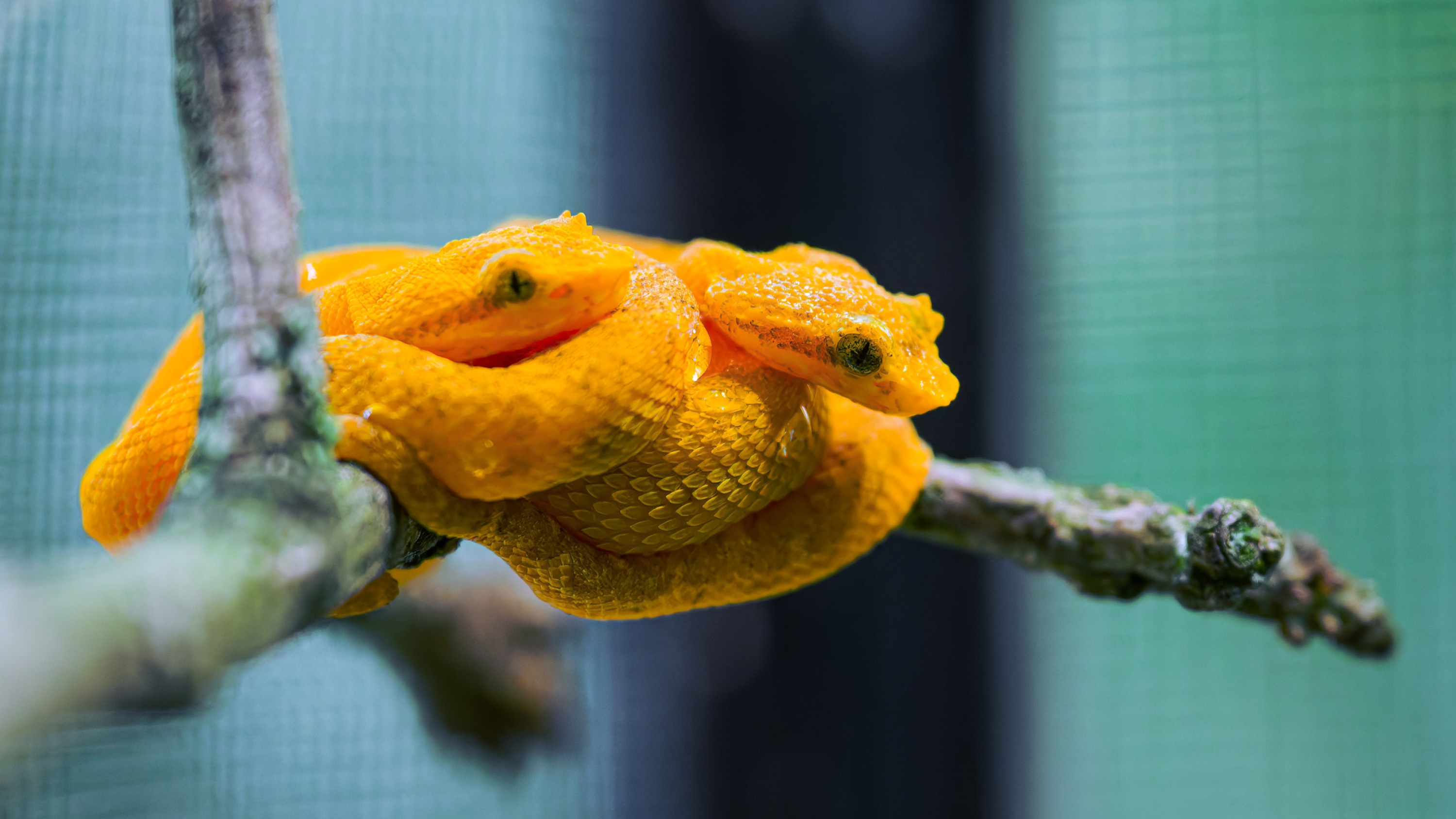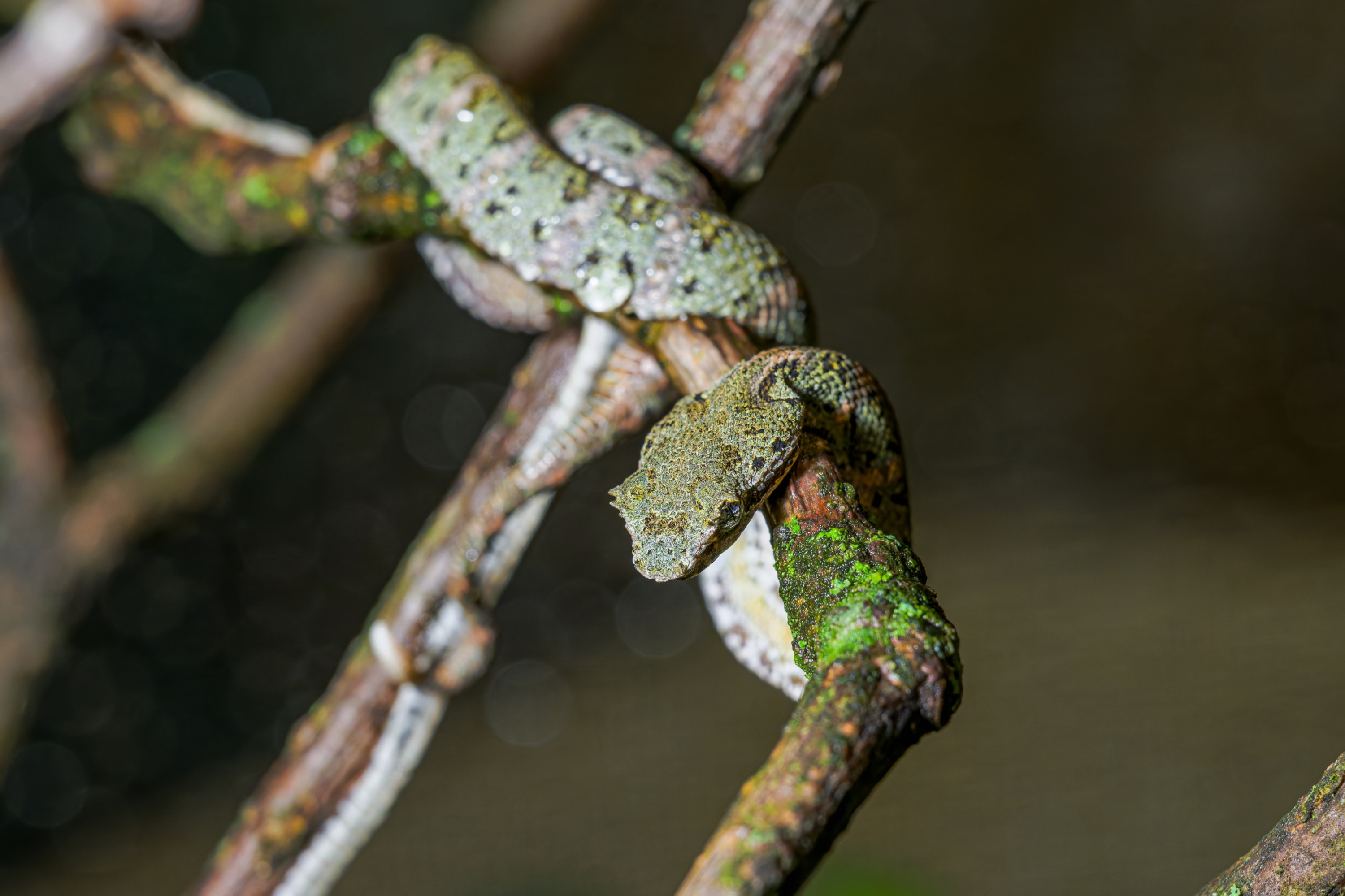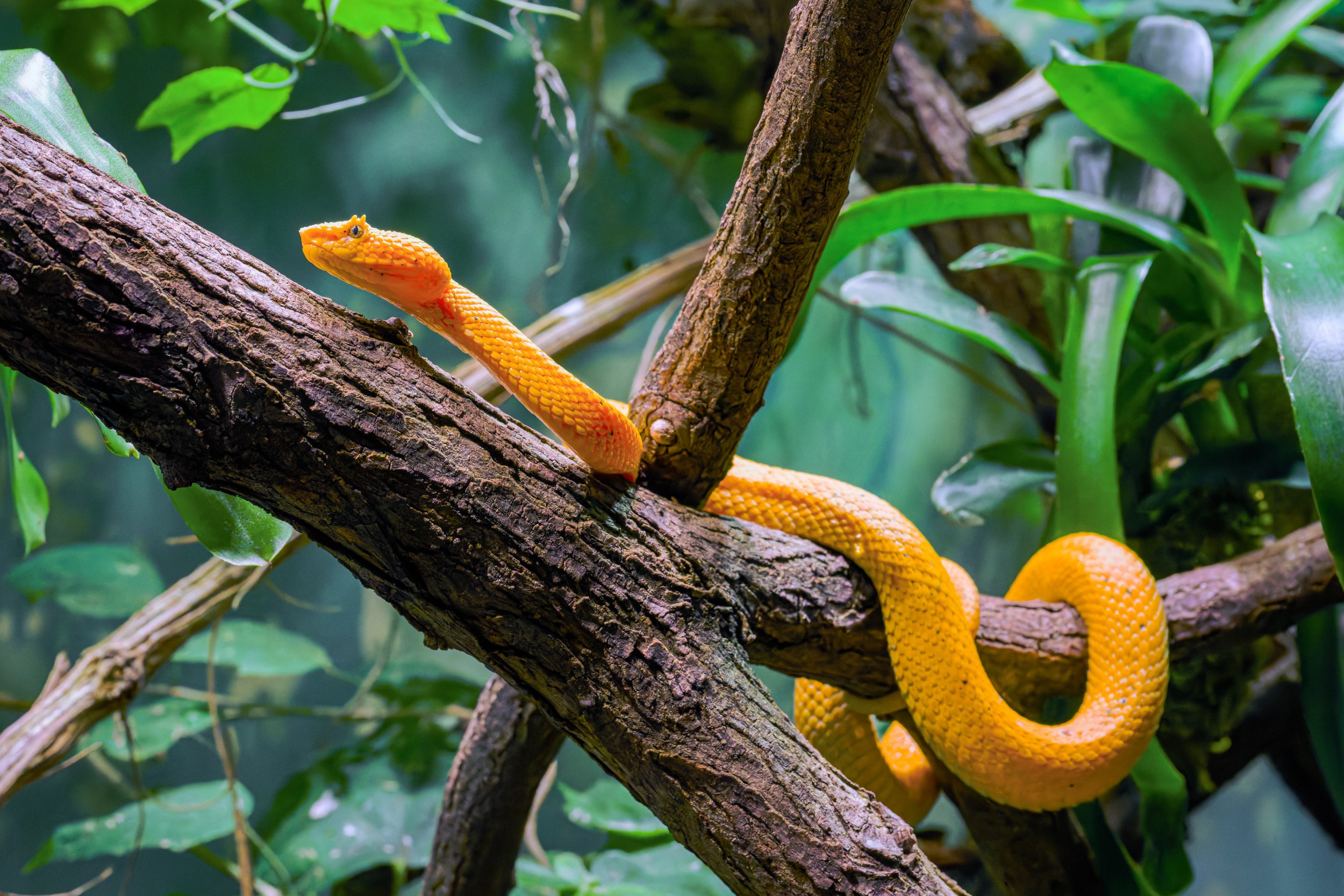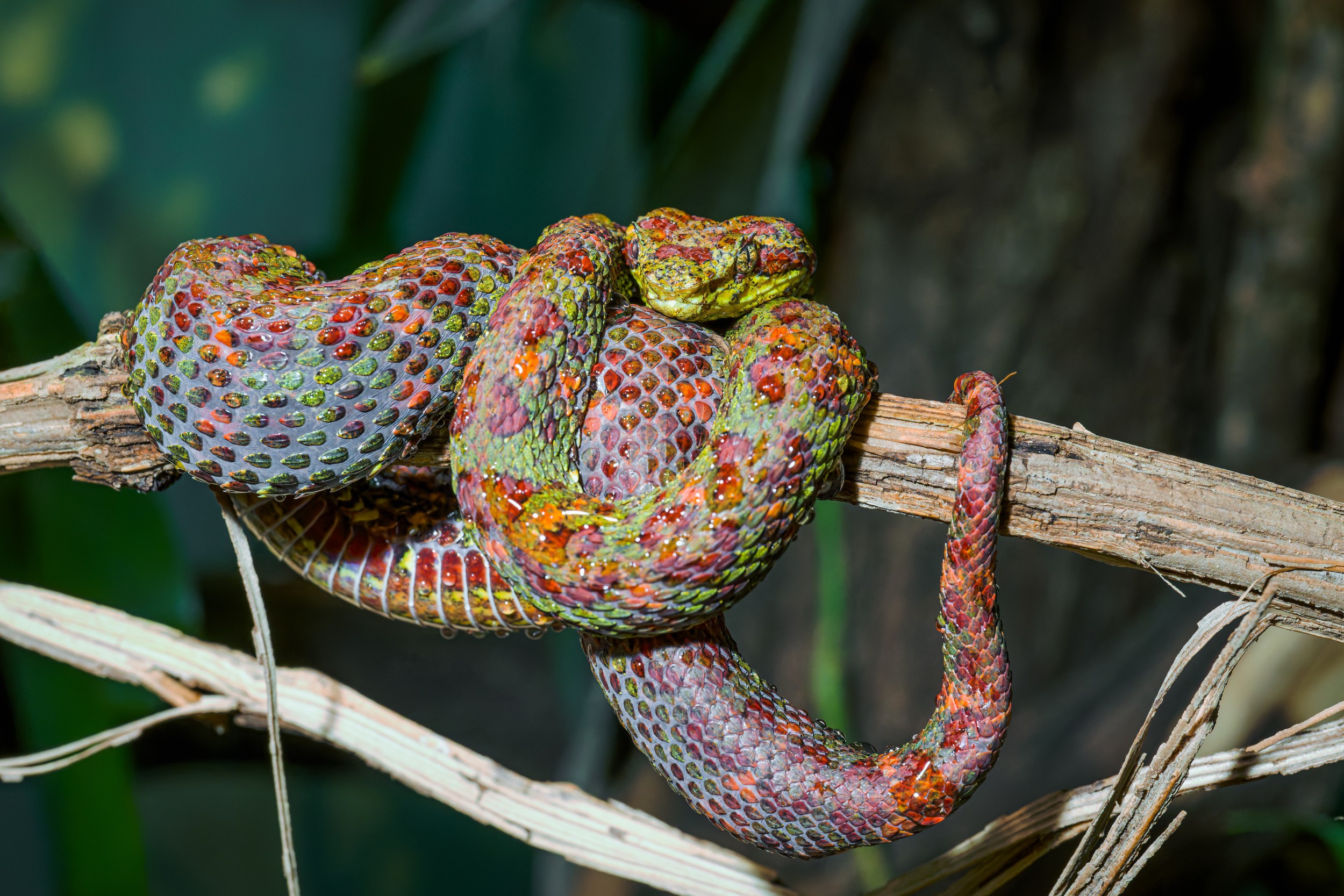Multicoloured, Venomous Eyelash Viper Snakelets at Prague Zoo
31. 10. 2025
Four have inherited their mother’s yellow colouring, but one is green and pink from their father. The young of the venomous eyelash vipers can now be seen at Prague Zoo’s Feline and Reptile House. They are on display in what is literally a terrarium within a terrarium – in a mini-exhibition located inside the terrarium for adult specimens. The tiny snakes were born on September 20 and immediately took to the branches to assume their typical positions. Like many pit vipers, the eyelash vipers give birth to live young. They rarely come down to the ground.

The yellow eyelash viper snakelets are easy to spot in their enclosure. Photo: Petr Hamerník, Prague Zoo
Reptile curator Petr Velenský said, “The varied colour patterns of this species are not due to animal husbandry, they are completely natural. Even in tropical Central America, where they live, we find these pit vipers adorned in yellow, green, brick red, brown, silver, pink, and various combinations of these colours. It’s a bit of a lottery. When we bred them for the first time in 2015, all the snakes were green and pink.”
According to Velenský, the pattern can be made up of spots of various sizes, which sometimes disappear completely or, in contrast, stretch into longitudinal stripes. He went on to add, “Surprisingly, this whole spectacle serves as camouflage. Being arboreal, eyelash vipers need to blend in with the highly diverse tropical vegetation, not simply to protect themselves from predators, but mainly to avoid being spotted by their potential prey.”

The only snakelet that was not born yellow this year blends in perfectly with its surroundings. Finding all five snakes can therefore be a fun challenge for visitors of all ages. Photo: Petr Hamerník, Prague Zoo
Pit vipers often lie in wait for their prey, quite often in the flowers of a plant. They wait for birds or bats that fly in to feed on the sweet nectar. When young, they mainly hunt frogs and small lizards. Their venom has hemorrhagic components that breaks down the blood of their prey. Bites to humans are not usually fatal and are rare. The species is known for its placidity and lack of aggression.
These pit vipers are also notable for the growths on their heads, which have earned them the common name “ostnitý” (spiny) in Czech. In English, one common name is eyelash vipers. Various horns, bumps and growths often adorn the heads of these snakes, whose hunting method is based on ambush, so they too help camouflage them from their prey.

Adult females can grow up to 70 centimetres. They are more robust than males and have significantly larger heads. Photo: Petr Hamerník, Prague Zoo
The snakelets have already sloughed their skin, and their colours are now starting to stand out and show their full potential. In addition to them, visitors can also see five adult eyelash vipers. Three of them are yellow and two are green and pink. The exhibition, which has ten snakes in all, also includes a plumed basilisk.
Note on nomenclature: In 2024, using DNA analysis, the original species Bothriechis schlegelii – known as the eyelash viper – was divided into seven separate species. This affected the Latin name and scientific terminology, but this revision has not yet been reflected in the zoo’s nomenclature. Prague Zoo keeps a Central American taxon, which is now referred to as Bothriechis nigroadspersus. As concerns popularising science and media coverage, which by its nature should not be complicated, Prague Zoo will continue to use the traditional Czech name křovinář ostnitý for this species as well as the English common name eyelash viper.

Adult male eyelash viper. Compared to the female, it is noticeably slimmer and smaller. Photo: Petr Hamerník, Prague Zoo








